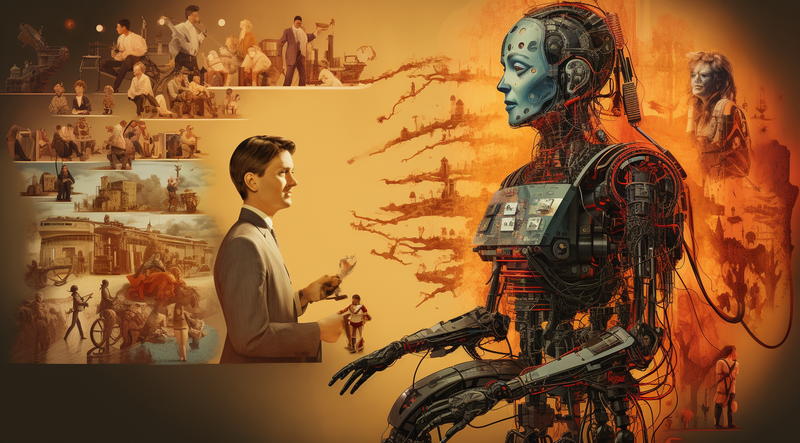
Introduction to AI Art: A Beginner's Guide to Understanding its History and Significance
In the ever-evolving realm of art, a groundbreaking innovation has emerged in recent years that is reshaping the creative landscape: AI art. This fusion of artificial intelligence and artistic expression has captivated both artists and art enthusiasts alike, opening up new avenues for creativity and challenging traditional notions of art. In this beginner's guide, we will explore what AI art is, its history, and its significance in the art world.
Defining AI Art
AI art refers to the process of creating artwork using artificial intelligence, often in collaboration with human artists. It involves training AI algorithms to generate, modify, or enhance visual content, such as paintings, drawings, or even 3D sculptures. These algorithms can analyze vast datasets of existing art and create new pieces inspired by various styles, artists, and artistic movements.
A Brief History of AI Art
AI art is rooted in the broader field of generative art, which dates back to the 1960s. One of the earliest examples is AARON, a program created by Harold Cohen, which could autonomously produce intricate drawings and paintings. However, it wasn't until the 21st century that AI art gained significant traction, thanks to advancements in machine learning and neural networks.
Early AI Art Pioneers
Several pioneering AI artists and projects have paved the way for the current state of AI art:Leonardo – A project by artist and programmer Robbie Barrat that uses neural networks to generate original art.
DeepDream – Developed by Google, this algorithm transforms photos into dream-like, surreal images.
GANs (Generative Adversarial Networks) – These have been used extensively in AI art, allowing the generation of realistic images or modifying existing ones.
Significance of AI Art in the Art World
Expanding Creative Possibilities: AI art broadens the creative toolkit for artists by enabling them to explore new styles, merge various artistic movements, or generate novel compositions.
Democratizing Art: AI art has the potential to make art more accessible to a wider audience, as it doesn't rely on the traditional skills and training that some artists spend years developing.
Challenging Notions of Authorship: AI-generated art raises questions about authorship and the role of the artist. Is the creator the human artist, the programmer, or the AI itself?
Art Preservation and Restoration: AI is being used to restore and preserve cultural artifacts and paintings, enhancing the conservation efforts in the art world.
Artistic Collaboration: Many artists now collaborate with AI algorithms to co-create art, blurring the lines between human and machine creativity.
Inspiration and Innovation: AI art can be a valuable source of inspiration for artists, offering new perspectives and techniques that can be integrated into their own work.
Sources
Zylinska, J. (2019). AI art: machines as artists. Open Arts Journal, 8(1), 167-181.
Elgammal, A., Liu, B., Elhoseiny, M., & Mazzone, M. (2017). CAN: Creative Adversarial Networks, Generating" Art" by Learning About Styles and Deviating from Style Norms. arXiv preprint arXiv:1706.07068.
Beeck, K., Bechmann, D., & Lomborg, S. (2020). How Can Artificial Intelligence Create Art? An Examination of Styles and a Reflection on the Ethical Implications. Art & Science, 1(1), 5-18.

0 comments